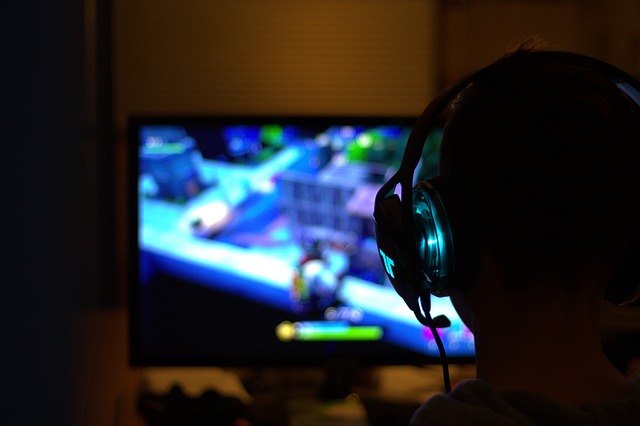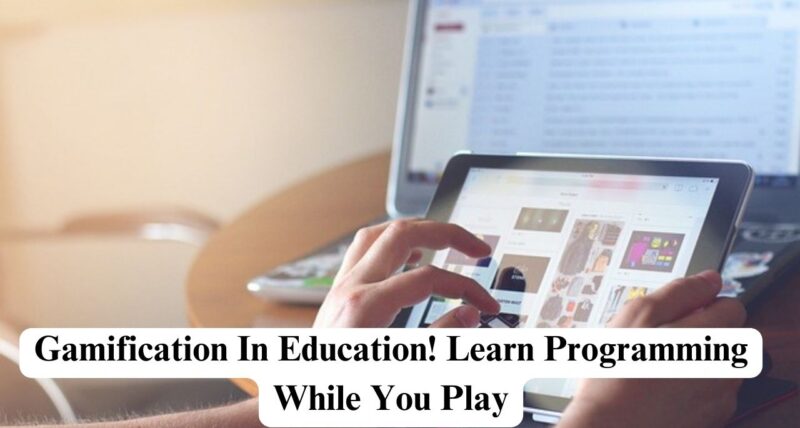Gaming is wildly popular! More than two out of every three Americans indulge in video games! That does not even count all the non-digital gaming varieties – board games, card games, or children’s games like – hide-and-seek or tag. More than recreation, games are now also a part of educational activities, with teachers seen introducing gamification in education.
Well, that does not mean only children can learn by playing! The IT (information technology) industry’s latest trend of developing AI-based applications (artificial intelligence), rising demand for trained professionals in IT, and amplified need for learning new technology are leading people to search for an innovative educational experience. The aim is to help current and upcoming employees acquire knowledge in an accessible and contemporary way. And gamification turns out to be an important solution in this regard. Continue in the blog to get a detailed understanding.
What Is Gamification In Education?
Gamification in education stands for the act of how educators apply elements from game design into an educational setting. The goal is to introduce an element of attraction to learning, making it more engaging.

According to facts, the brain works in harmony with the gamification process, initiating the release of dopamine, which amplifies the players’ enjoyment and motivation. Wondering how things work together? Here is a quick overview of the gamification effect on one’s brain.
Connects The Learner On An Emotional Level
Emotions can be a powerful way to trigger learning. They help with the practice of information encoding and retrieval more effectively. Thus making the learning process much more efficient with fun intended. Added to the process, gamification develops an emotional connection between the students and the content taught. They idealistically influence an individual’s attention, making them more receptive to learning.
Stories Are Easier To Process Compared To Facts
For the brain, it is much easier to process stories than a string of facts. Because of this reason, storytelling is an exclusive way to deliver new information to individual students. And gamification overtly benefits from utilizing this strategy. That is because games often involve story-telling elements – characters, background, plot twists, etc.
There Is An Improvement In Endorphin Release
Also known as natural painkillers – Endorphins can calm people down, improve relaxation, and increase focus. The body naturally produces them while indulging in engaging activities or playing games. In this context, gamification strategies tend to improve the endorphin release. Thus helping to develop an environment – appropriate for focused learning.
Games Keep The Brain Healthy
Out of all, neuroplasticity is encouraged by games! Because of this, the brain can respond to different stimuli and develop new connections. This training can strengthen neural pathways and enhance cognitive skills – attention and memory, besides enhancing problem-solving skills and creativity. Thus helping prevent age-specific cognitive decline in the long run.
Learn Programming While Playing – Gamification In Education
Researchers from the Kaunas University of Technology (KTU) Lithuania and universities in Portugal, Poland, and Italy have devised a proposal to gamify the conduct of learning programming and AI development for IT professionals. They have published a paper in the journal Computers. The study examines FGPE PLE user experience over mobile across different countries, Lithuania and Poland, providing novel insights into the efficiency and applicability. The study results demonstrate how combining adaptive algorithms (advanced) with the ease of use of mobile technology can revolutionize programming education.

According to a KTU professor, the possibility to adapt to the learning setup on a personal level, depending on each learner’s special abilities, needs, and progress level, is one of the primary advantages of introducing gamification in education.
The researchers suggest that personal adaptation is a composite process identifying a student’s primary knowledge, strengths, abilities, and weaknesses. Then, goals are selected with an AI or human tutor, generating an individual learning plan. Also, they highlighted how the classical modes of teaching are not adapting fast enough to offer updated programming knowledge in such a way that modern-day students accept!
The Development Of IT Gamification
Even though the new gamification solution developed by KTU and the partners is already under use in Lithuania. For the Ministry of Education, Science, and Sport’s special project, KTU is operating a module on informatics. It allows teachers to learn additional IT competencies. The gamification solution uses progressive web applications (PWAs) across media and e-commerce websites. According to researchers, they also allow content to be easily accessed across any device. Often, applications also work without being connected to the internet.
During the term period of this course, learners have tried out gamification. According to the experts, the uniqueness of the approach has kept the learners continuously interested and motivated.
They came across optional gamified tasks! However, seeing that most students would try them out was nice. As per the results, this took towards an improvised educational performance. The teachers’ willingness to try the tools provided made everything possible.
So that is all about gamification of the IT process. The research states how, other than infrastructural or bureaucratic issues, the learners’ mindset and teachers’ need to undergo alterations do matter. They need to understand these technologies and their meaning. Only then everyone will be on the same page.




